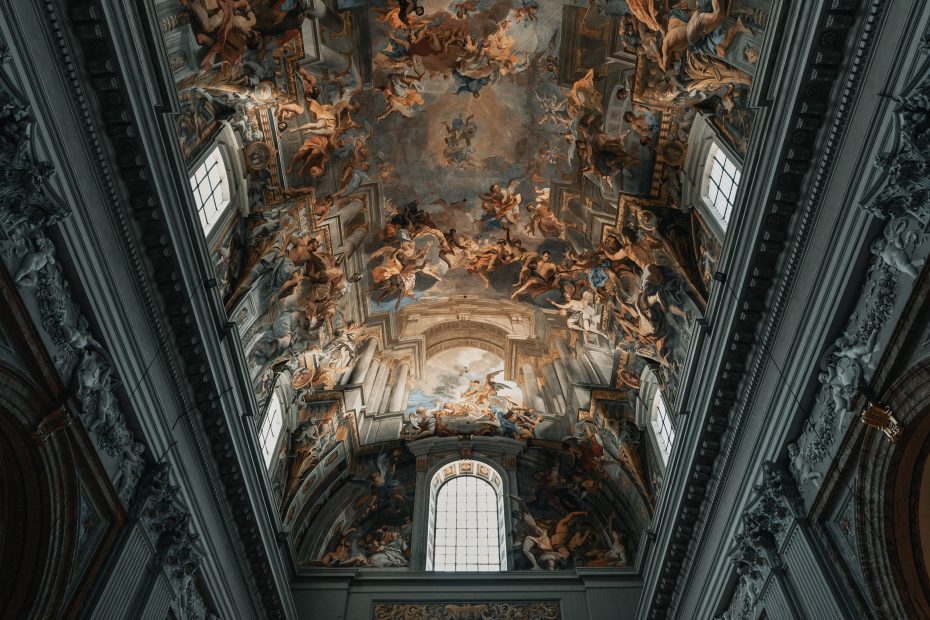Table of Contents
Introduction
The enormous and magnificent St. Peter’s Basilica is undoubtedly the star attraction in Vatican City. This Renaissance church dominates the skyline and draws millions of visitors every year who are eager to see Michelangelo’s incredible artworks inside. However, there is much more to discover in this tiny independent city-state beyond its famous basilica. Countless hidden gems await just steps away for those willing to venture off the beaten path.
Vatican Museums
Connected to the basilica is the sprawling Vatican Museums complex. Its labyrinth of galleries contains one of the world’s greatest art collections spanning centuries of work. Most come to see Michelangelo’s sublime frescoes in the Sistine Chapel, but the museums offer a treasure trove beyond that famous stop. Don’t miss masterpieces by Raphael, Caravaggio, Leonardo da Vinci, and more around every corner. The stunning spiral staircase designed by Giuseppe Momo is a showstopper itself.
St. Peter’s Square
This iconic plaza in front of the basilica is surrounded by enormous colonnades and marked by an Egyptian obelisk in the center. It is full of intricate details like the 140 statues of saints atop the colonnade and the ornamental fountains. St. Peter’s Square beautifully blends architecture and art to create an awe-inspiring space.
Gardens
Vatican City’s impeccably maintained gardens offer an escape from the bustling crowds. The Vatican Gardens span nearly half the country’s total area. These lush landscapes were originally the pope’s private meditation gardens. The vibrant Belvedere Courtyard has a memorable view overlooking St. Peter’s.
Lesser-Known Churches
While most flock to St. Peter’s Basilica, Vatican City houses other exquisite churches that often fly under the radar. The Sante Maria della Pieta hides Michelangelo’s moving statue of the Virgin Mary cradling Jesus. Nearby, the 12th century St. Anne’s Church is known for its vibrant mosaics.
Architecture
The architecture of Vatican City reflects a blend of Renaissance, Baroque, and Neoclassical styles. Notable buildings include the Chigi Chapel with its Baroque interior, the classic Pontifical Academy of Sciences, and Bramante’s 16th century Belvedere Palace. This diversity of structures makes wandering around a visual feast.
Archives
The Vatican Secret Archives preserve centuries of the Catholic Church’s historic documents. Though access is limited, visitors can get a peek into the Church’s fiercely guarded secrets and the Pope’s astronomy tower on a tour. The archives offer a fascinating glimpse into the Vatican’s rich history.
Catacombs
Underneath Vatican City lie ancient Roman catacombs that sheltered early Christian graves. Take a guided tour to wind through the underground tunnels and see relics dating back to the 4th century AD. It’s an eerie yet captivating look into the city’s past buried far below the surface.
Souvenir Shops
After a day of exploration, pick up unique Vatican-themed souvenirs in the city’s specialty shops. Rosaries, papal bottles of wine, artwork reproductions, and traditional crafts make meaningful mementos. The shops near St. Peter’s Square offer the best selection.
Cuisine
Vatican City’s restaurants showcase Rome’s distinctive cuisine. Traditional Roman pastas like bucatini all’amatriciana and cacio e pepe are served alongside the city’s famous thin-crust pizza. Local bakeries also sell delicious Vatican-themed treats like Pope cookies.
Getting Around
Vatican City’s compact size makes it very walkable. Simply wear comfortable shoes to navigate the cobblestone streets on foot. The main areas can be seen in a day, but visiting the museums and crypts require more time. Avoid long security lines by reserving museum tickets ahead online.
Guided Tours
Joining a guided tour takes you straight to the must-see attractions with an insider’s perspective. Knowledgeable guides share fascinating facts and history while navigating the crowds. Private tours allow customization while group tours foster camaraderie with fellow travelers.
Lodging
There are few hotels within Vatican City itself, so look to the neighboring Borgo Pio district for lodging options. Avoid tourist traps by booking early. For proximity, choose hotels near Ottaviano Metro station. Casa di Santa Brigida overlooks St. Peter’s Square.
When to Visit
Peak visitor season is summer, especially during Easter and Christmas. For fewer crowds, visit in spring or fall. The best weather is typically April, May, September and October when temperatures are mild. Book well in advance if visiting during a papal audience.
Conclusion
Beyond its showstopper basilica, Vatican City deserves days of exploration to uncover its full splendor. Wandering through its museums, gardens, piazzas, churches, and palaces lets you experience this small country’s rich history and artistry. Around every corner, another architectural, artistic, or spiritual treasure awaits. Discover them all!
5 FAQs about Vatican City:
What is the dress code for visiting the Vatican?
The Vatican enforces a strict dress code – shoulders and knees must be covered, no short skirts or shorts allowed. This applies for both men and women.
What is the best way to see the Vatican Museums?
Book tickets in advance and go in the morning right when it opens to beat the crowds. Follow a route that ends at the Sistine Chapel.
Do I need a guide to visit Vatican City?
No, a guide is not essential but can be very useful to skip lines and dive deeper into the history. Guides are especially helpful for the museums.
How do I attend the pope’s weekly audience?
Tickets are free but should be reserved well in advance online. Audience days vary, so check the pope’s schedule online before your trip.
What souvenirs should I buy in Vatican City?
Popular souvenirs include artwork reproductions, rosaries and religious gifts, wine from the Vatican vineyards, locally made pasta and olive oil, pope-themed trinkets, and books on Vatican art and history.
